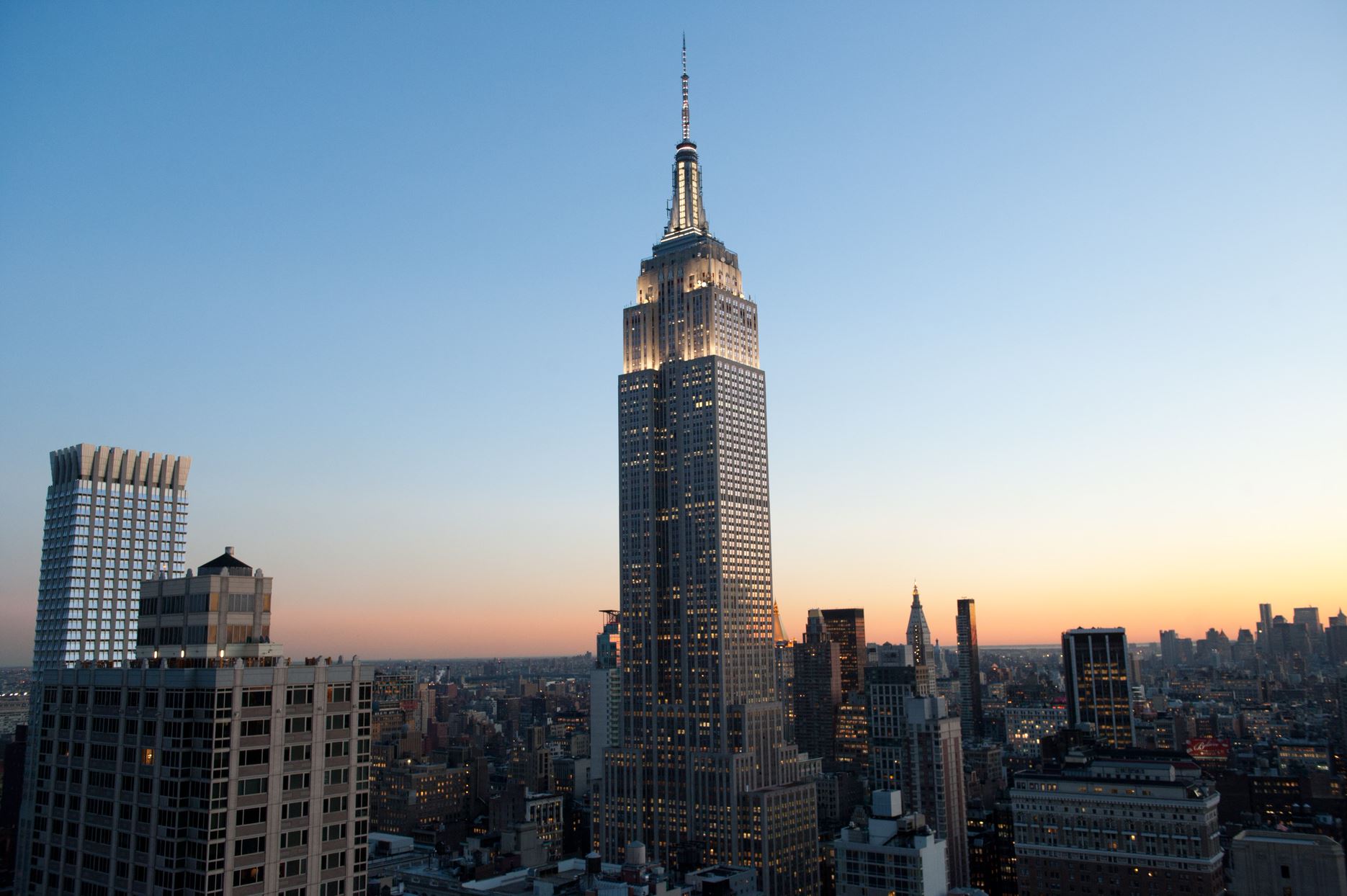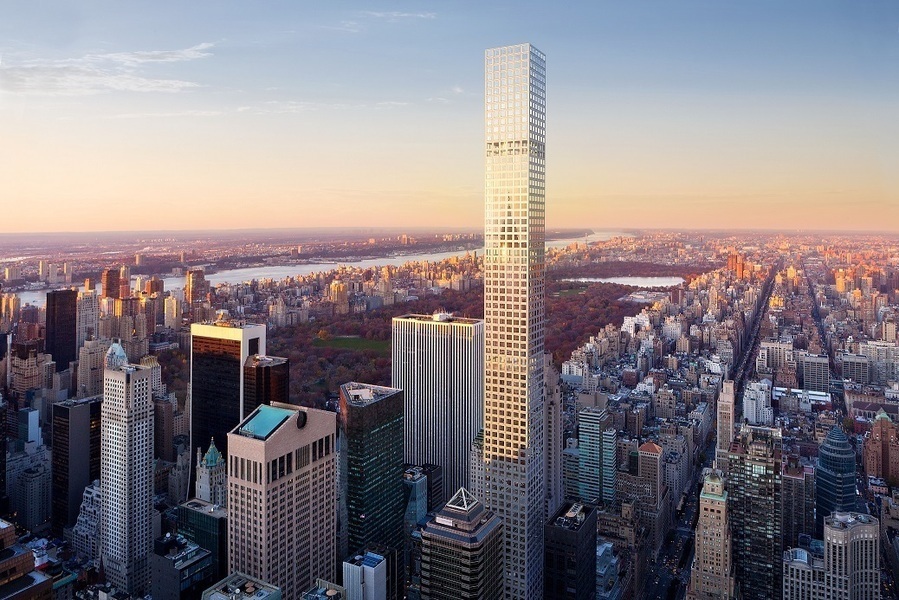The top ten tallest buildings in America showcase architectural brilliance and urban innovation, defining city skylines across the nation. These skyscrapers, from New York City’s iconic One World Trade Center to Chicago’s Willis Tower, represent engineering marvels and cultural landmarks. Each building, like the Empire State Building or Los Angeles’ Wilshire Grand Center, blends modern design with historical significance, drawing millions of visitors annually.
Their towering heights, often exceeding 1000 feet, symbolize economic growth and technological advancement. For instance, One Penn 1 in Manhattan combines sleek aesthetics with sustainable features, while Miami’s Panorama Tower reflects the city’s vibrant expansion. These structures house offices, luxury residences, hotels, and observation decks, offering breathtaking views and shaping local tourism. Exploring the tallest buildings in America reveals unique stories of construction challenges, architectural styles, and urban planning. From the Art Deco elegance of 432 Park Avenue to the futuristic curves of San Francisco’s Salesforce Tower, each skyscraper contributes to America’s diverse architectural landscape. This topic delves into their heights, locations, designers, and cultural impact, providing a comprehensive guide for enthusiasts of architecture, travel, and urban development. Discover the soaring giants that redefine America’s skyline and inspire awe worldwide.
The Top Ten Tallest Buildings In America
10. Empire State Building – New York City – 1,250 ft (381 m)

The Empire State Building, a timeless symbol of New York City, stands at 1,250 feet to its roof, reaching 1,454 feet with its antenna spire across 102 floors. Completed in 1931, this Art Deco masterpiece, designed by Shreve Lamb & Harmon, was the world’s tallest building for nearly four decades. Its limestone and granite facade, weighing 365,000 short tons, features 6,514 windows and a distinctive spire. Built during the Great Depression for $40,948,900 (about $661 million in 2023), construction took just 20 months, showcasing remarkable efficiency.
This skyscraper houses office spaces and draws approximately 4 million visitors yearly to its observatories on the 80th, 86th, and 102nd floors, offering panoramic views of Manhattan. Its cultural impact is immense, appearing in films like “King Kong” (1933) and earning National Historic Landmark status in 1986. A $550 million renovation in 2009 added energy-efficient windows and LED lighting, securing LEED Gold certification. The spire broadcasts 11 TV and 22 FM stations, reinforcing its role as a communication hub. The Empire State Building remains a cornerstone of America’s architectural heritage, blending history with modern sustainability.
9. 30 Hudson Yards – New York City – 1,270 ft (387 m)

30 Hudson Yards, completed in 2019, is a neo-futurist skyscraper in Manhattan’s Hudson Yards development, standing at 1,270 feet with 103 floors. Designed by Kohn Pedersen Fox, its glass facade and triangular observation deck, The Edge, define modern urban architecture. Spanning 2.6 million square feet, it houses major corporations like Warner Bros. Discovery and Home Box Office, reflecting New York’s commercial prowess.
The Edge, at 1,100 feet, opened in 2020 with a cantilevered terrace extending 80 feet, featuring transparent flooring for thrilling views. The building includes 59 elevators and a lobby artwork by Jaume Plensa, showcasing 11 stainless steel spheres symbolizing global unity. Construction, starting in 2014, cost $3.8 billion, with a $690 million loan secured in 2015. Its sustainable design incorporates energy-efficient systems, aligning with green building trends. As one of America’s tallest buildings, 30 Hudson Yards blends office functionality with tourism, enhancing Manhattan’s skyline and economic vibrancy.
8. 270 Park Avenue – New York City – 1,388 ft (423 m)
![270 Park Ave (U/C) [1,388ft/423m] : r/skyscrapers](https://i.redd.it/270-park-ave-u-c-1-388ft-423m-v0-h0pm6w6bi8gc1.jpg?width=1366&format=pjpg&auto=webp&s=48156af1ba9eacad9a0cbd850f353e048e617b89)
270 Park Avenue, nearing completion in early 2025, will stand at 1,388 feet with 70 floors, serving as JPMorgan Chase’s new headquarters. Designed by Foster + Partners, this skyscraper features a unique “fan-column” structure, elevating the building 80 feet above street level to create a public plaza on Madison Avenue. Spanning 2.5 million square feet, it will accommodate 15,000 employees with amenities like a food hall, fitness center, and conference spaces.
Its all-electric design, powered by hydroelectric energy, uses 97% recycled materials from the demolished Union Carbide Building, aligning with New York’s post-2027 gas ban. Construction began in April 2021, with a topping-out in November 2023, but a worker fatality in March 2023 led to a temporary halt. This skyscraper exemplifies sustainable urban development, positioning 270 Park Avenue among America’s tallest buildings while prioritizing environmental responsibility and modern workplace functionality.
7. Trump International Hotel and Tower – Chicago – 1,388 ft (423 m)

The Trump International Hotel and Tower, completed in 2009, rises 1,388 feet across 98 floors in Chicago, blending luxury hospitality with residential living. Designed by Adrian Smith of Skidmore, Owings & Merrill, its modern facade features a white Portland cement lattice and a prominent spire. Spanning 2.6 million square feet, it includes 339 hotel rooms, 486 condominiums, a spa, fitness center, and the Michelin two-star restaurant Sixteen.
A 1.2-acre riverfront park, opened in 2010, enhances its urban integration. However, environmental concerns arose, with a 2024 ruling labeling its cooling water intake a public nuisance impacting the Chicago River. Construction cost $847 million, facing challenges like flooding in 2014. This skyscraper remains a key player in Chicago’s skyline, offering luxury and tourism appeal among America’s tallest buildings.
6. 432 Park Avenue – New York City – 1,396 ft (426 m)

432 Park Avenue, completed in 2015, is a luxury residential skyscraper on Billionaires’ Row, standing at 1,396 feet with 85 floors. Designed by Rafael Viñoly, its minimalist white Portland cement lattice and 15:1 height-to-width ratio make it a striking addition to Manhattan’s skyline. It houses 125 condominiums, including an 8,255-square-foot penthouse on the 96th floor, with amenities like a private restaurant, 75-foot pool, and fitness center.
Costing over $724 million, its construction faced scrutiny for 1,500 reported defects, leading to a 2021 lawsuit. By 2024, units sold at discounts, reflecting market shifts, yet it remains a pinnacle of ultra-luxury living. Nicknamed “Awful Waffle” for its grid-like design, 432 Park Avenue is a bold statement in America’s tallest buildings, blending exclusivity with architectural controversy.
5. One Vanderbilt – New York City – 1,401 ft (427 m)
One Vanderbilt, completed in 2020, stands at 1,401 feet with 59 floors near Grand Central Terminal, redefining modern office spaces. Designed by Kohn Pedersen Fox, its glass facade with terracotta piers spans 1.75 million square feet, housing tenants like TD Bank. The Summit One Vanderbilt observation deck, at 1,020 feet, opened in 2021, offering immersive views.
Costing $3.31 billion, construction included a 14,000-square-foot plaza and $200 million in transit upgrades, like a new subway entrance. By September 2024, it achieved 100% occupancy at $265 per square foot, reflecting strong demand. With LEED Gold certification, One Vanderbilt showcases sustainable urban architecture, making it a standout among America’s tallest buildings for business and tourism.
4. 111 West 57th Street (Steinway Tower) – New York City – 1,428 ft (435 m)

111 West 57th Street, known as Steinway Tower, completed in 2022, is the world’s skinniest skyscraper at 1,428 feet with 84 floors and a 1:24 width-to-height ratio. Designed by SHoP Architects, its glass facade integrates the historic Steinway Hall, blending modern luxury with 1925 heritage. It features 59 condominiums, with units from 2,580 to 7,175 square feet, and 20,000 square feet of amenities, including a pool and padel court.
Costing $2 billion, construction faced financing issues and COVID-19 delays, plus a $105 million lawsuit. Its slender design and Central Park views make it a jewel of Billionaires’ Row, contributing to America’s tallest buildings with unmatched exclusivity and architectural daring.
3. Willis Tower – Chicago – 1,450 ft (442 m)

Willis Tower, formerly Sears Tower, completed in 1974, stands at 1,450 feet with 108 floors, a Chicago icon designed by Skidmore, Owings & Merrill. Its “bundled tube” structure, with nine square tubes clad in aluminum and black glass, spans 4.47 million square feet, housing tenants like United Airlines. The Skydeck, at 1,353 feet, features glass balconies (“The Ledge”) and draws 1.7 million visitors yearly.
A $500 million renovation, completed in 2022, modernized elevators and added amenities. Environmental lawsuits in 2024 targeted its cooling system’s impact on the Chicago River. Costing $150 million in 1974, Willis Tower remains a cultural and architectural giant among America’s tallest buildings, featured in films like “Ferris Bueller’s Day Off.”
2. Central Park Tower – New York City – 1,550 ft (472 m)

Central Park Tower, completed in 2020, is the world’s tallest residential building at 1,550 feet with 98 floors. Designed by Adrian Smith + Gordon Gill, its glass and zinc facade features a 28-foot cantilever, earning a Guinness World Record. It houses 179 condominiums averaging 5,000 square feet, with a 50,000-square-foot club on the 100th floor offering pools and dining.
A 360,000-square-foot Nordstrom store anchors its retail base. Costing $3 billion, construction faced challenges like a 2018 worker fatality. Its Central Park views and luxury amenities make it a pinnacle of America’s tallest buildings, redefining high-end urban living.
1. One World Trade Center – New York City – 1,776 ft (541 m)
One World Trade Center, completed in 2014, is America’s tallest building at 1,776 feet across 94 floors, symbolizing resilience on the 9/11 site. Designed by Skidmore, Owings & Merrill, its height reflects the Declaration of Independence year. Spanning 3.5 million square feet, it houses Condé Nast and features the One World Observatory at 1,268 feet, opened in 2015 with $32 admission.
Costing $3.9 billion, its construction included 3-foot-thick concrete walls and LEED Gold certification. Incidents like a 2014 teen climbing incident highlight its prominence. As the tallest in the Western Hemisphere, One World Trade Center leads America’s tallest buildings, blending history, security, and tourism




